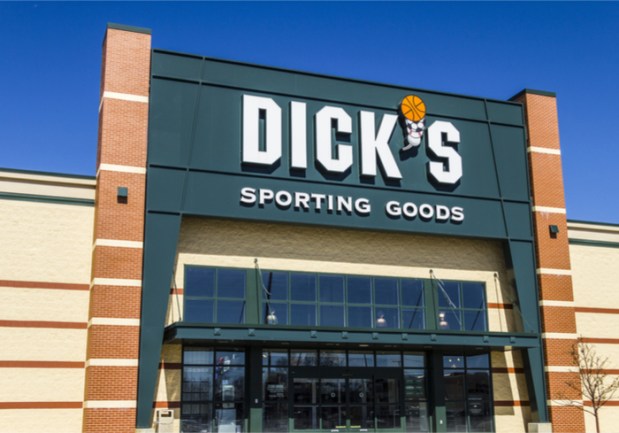Dick’s Sporting Goods eCommerce Business Grew 24 Percent In Q1

After taking its eCommerce channel in-house, Dick’s Sporting Goods is stepping up its omnichannel efforts. To do so, it is focusing on its speed of checkout in its brick-and-mortar stores and through its eCommerce channel.
Dick’s Sporting Goods President Lauren Hobart said in the company’s post-earnings conference call on Wednesday (May 30), “Our efforts to improve core functionality on our new web platform combined with overall better execution resulted in improvements in margin rates, conversion and average order value in eCommerce during the quarter contributing to the 24 percent online growth.”
In addition, the retailer has recently tested placing lockers near the entrances of its brick-and-mortar stores. With the lockers, customers can place an order online and pick it up in a store within an hour without having to work with a staff member.
“This is just one example of a new agile approach we are taking to innovation through which we are rapidly experimenting to optimize our omnichannel experience, learning quickly and moving to solutions,” Hobart said.
Though Hobart did not say how profitable online is compared to its legacy, she said the profitability of the company’s eCommerce channel has “improved significantly since we’ve taken it in-house and we will continue to improve even further as we are able to leverage fixed expenses with growth,” Hobart said, adding that the retailer plans to grow its eCommerce channel “significantly.”
The news comes about a year after Dick’s Sporting Goods fined-tuned its price matching policy. As competing with Amazon’s prices has mostly been an online battle of eRetailers throwing down the gauntlet, Dick’s Sporting Goods upped the game for brick-and-mortar by including online retailers, such as Amazon, in its policy. The new pricing update did not lend itself to big shopping days like Black Friday or Prime Day, but it did include all regular-priced items and their identical twins at other stores.
Even so, Nike launched a pilot with Amazon last June. Earlier that month, it was reported that such an arrangement could give Nike the opportunity to more closely control pricing and presentation. Nike competitors Adidas and Under Armour had an Amazon advantage at the time, with eye-catching splash pages to drive clicks and sales for their latest products. Some of Nike’s products had been previously available through Amazon, but these had been purchased wholesale and listed by third-party sellers and unlicensed dealers.
However, though increasing online retail outlets may help make up the difference for slimming brick-and-mortar retail outlets, the bankruptcy and closure of brick-and-mortar sports retailers, such as Sports Authority, has not done Nike any favors. Yet, even if retailers like Sports Authority were still around, there’s one group that probably wouldn’t be shopping there: millennials. Younger consumers are more likely to turn to Amazon for their sporting needs, so the move gave Nike a more direct line of access to an important demographic.
